Mustard is known as one of the most popular condiments or spices in the world, made from the spicy seeds of a mustard plant. The whole plant can be used for a variety of purposes, from pressing the seeds for oil to eating the edible greens.
Mustard plants bear clusters of small yellow flowers that are most commonly seen sweeping across endless fields and meadows.
While mustard flowers are beautiful in their own right, there are countless other flower species that share similarities with mustard flowers, from the color to the shape. Mustard-colored flowers are a beautiful way to immediately brighten up a garden.
Whether you’re looking for more information about mustard flowers or if you want to enhance the colors in your garden, here is our guide to mustard flowers!
1. Mustard Flowers
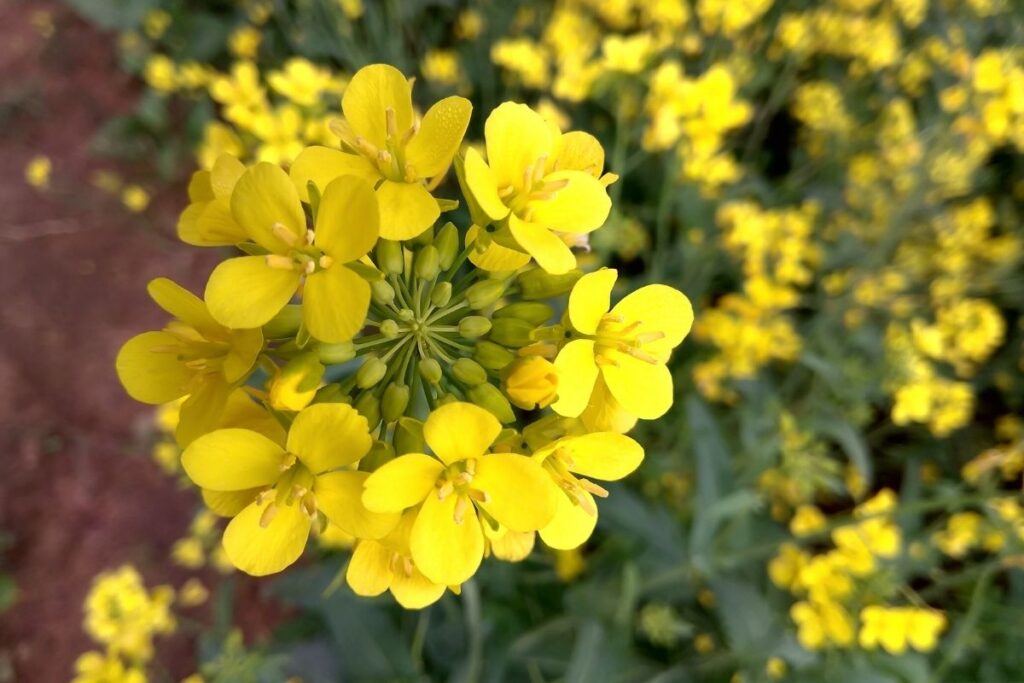
While there are several kinds of mustard plants, the flowers are all fairly similar. Mustard plants can grow anywhere from 6 to 20 feet tall, with each stalk bearing clusters of small yellow flowers.
Each flower consists of four petals along with six stamens, making them a self-fertile flower. Mustard flowers can also come in white color.
Mustard plants are typically grown in spring to benefit from making oil from the seeds, but despite the dainty flowers, the plants aren’t typically used in gardens.
2. Yellow Alyssum (Alyssum Alyssoides)

Yellow alyssum is a species of flowering plant that actually belongs to the mustard family, which is why they look so similar to common mustard flowers!
While these flowers are native to Eurasia, they can be found throughout the temperate world as a common weed. Yellow alyssums produce clusters of small yellow flowers in late spring to summer.
Yellow alyssums are a great way to brighten up a rocky wall, rock garden, or fill in the space as a ground cover.
3. Yarrow (Achillea Millefolium)
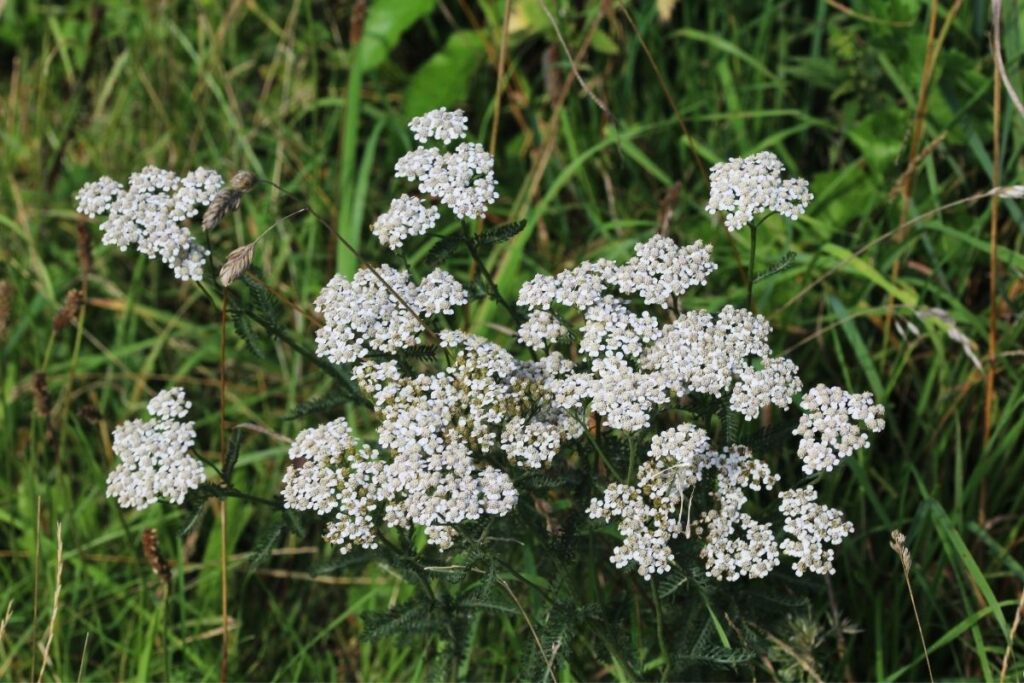
The common yarrow is a flowering plant that closely resembles mustard flowers. Native to temperate parts of the Northern Hemisphere, yarrow is typically known as a weed thanks to its abundance of growth in meadows, along roadsides, and in coastal areas.
Each erect stalk bears an inflorescence of tiny flowers, which are commonly yellow or white.
Yarrow is a beneficial flower in gardens, not only because of its dainty appearance but because it attracts pollinators and acts as a material to line bird’s nests. This flower likes to be planted in well-drained soil and full sun.
4. Yellow Butterfly Bush (Buddleia x weyeriana ‘Honeycomb’)

The yellow butterfly bush, as the name suggests, is known for attracting its favorite pollinators – butterflies. These flowering shrubs can grow up to 8 feet high in the right conditions, with each arching branch bearing a globular cluster of small yellow-orange flowers.
Yellow butterfly bushes are easy to grow and maintain thanks to their love for the full sun and moist, well-draining soil. They typically bloom from late summer to fall, which is ideal for keeping a garden alive while other blooms go into dormancy.
5. Dutch Hyacinth (Hyacinthus orientalis)

Dutch hyacinths are one of the most popular species of flowers amongst gardeners for their fragrant flowers and early blooming time.
While hyacinths typically appear in a purple variety, a pale yellow variety exists, matching the color of mustard flowers. Dutch hyacinths produce a bulbous cluster of yellow flowers that are bell-shaped and slightly open.
With the ability to grow early in the season and even during winter, the Dutch hyacinth is a resilient and easy flower to grow. They typically prefer to be planted in full sun and well-drained soil.
RELATED: Harmonious And Sweet: 11 Different Types Of Hyacinths
6. Goldenrod

Goldenrod is another flower that is often mistaken for mustard flowers. These flowers belong to the sunflower family, which is evident through their bright yellow blooms. The flowers themselves are tiny, growing in clusters that look like tiny trees alongside the pale silver-green foliage.
Interestingly, goldenrod has a high pollen content that is (ironically) ideal for people with allergies. As the pollen is so heavy, it sticks to the legs of pollinators rather than flying into the wind. These flowers bloom from summer to autumn, keeping the garden bright while other flowers die away.
7. Craspedia

Also known as woolly heads, Craspedia is a genus of flowers native to Australia and New Zealand.
These herbs produce rosette-forming flowers in the shape of a golf ball, with the ability to grow to the size of a tennis ball. The flowers are tiny and tightly packed into a rounded cluster, resulting in a mass of bright yellow.
Craspedia flowers make for a unique addition to a garden, not only for their fascinating appearance but also for their ability to bloom throughout the year. They typically enjoy being planted in well-drained soil, partial shade, and warm climates.
8. Bulbous Buttercup (Ranunculus Bulbosus)
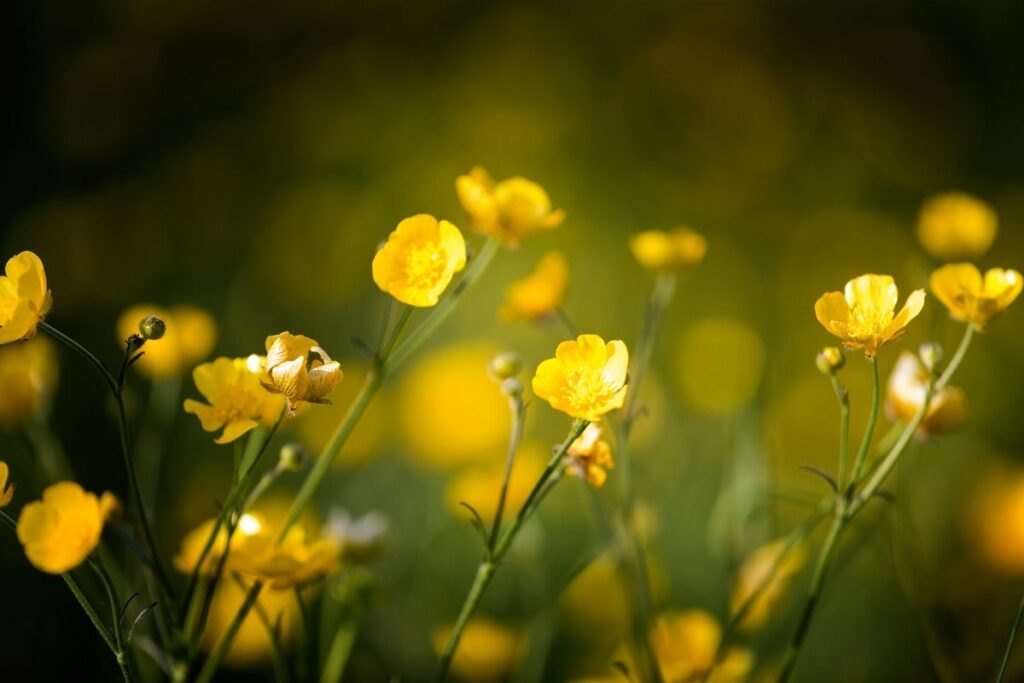
Also known as St. Antony’s turnip, the bulbous buttercup is a perennial most commonly found dotted around meadows, woodlands, roadsides, and gardens.
While it is actually a weed, they’re certainly one of the prettiest weeds to appear on a garden lawn. Bulbous buttercups are bright yellow flowers with rounded petals in an open cup shape.
Bulbous buttercups thrive in moist and well-drained soil with poor nutrients and are as easy to grow in a garden as they are in the wild.
9. Marigold (Tagetes)
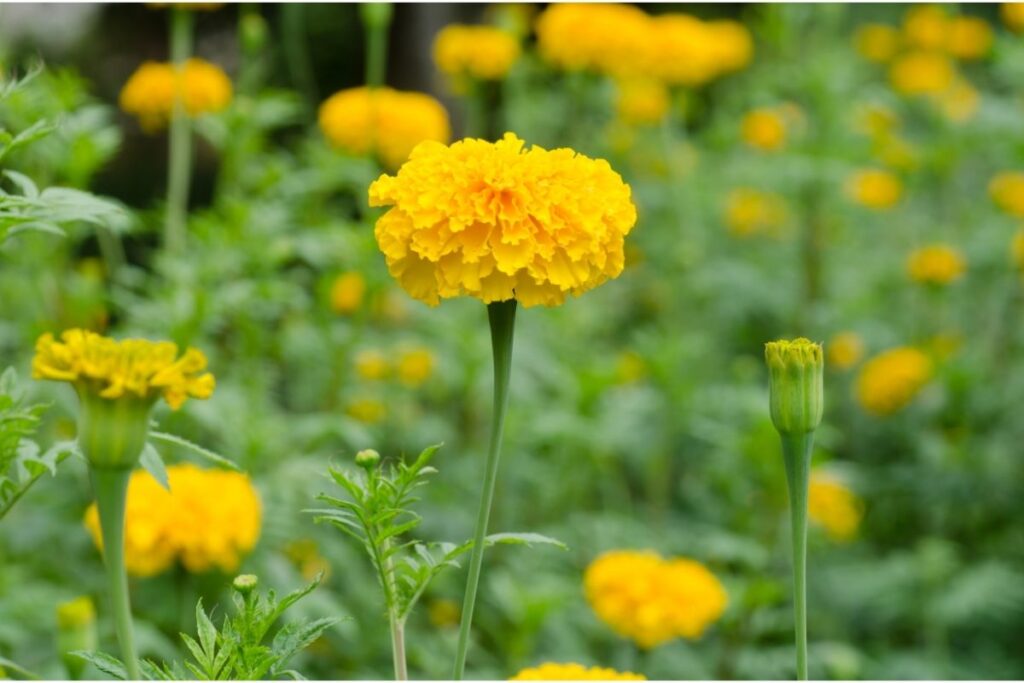
Marigolds are a genus of perennial (or annual) herbaceous plants that are native to the Americas. These plants are known for their bright yellow or orange flowers, which are positioned in a ray or disc floret structure, making them look like clusters of small yellow flowers.
Marigolds are also known for their strong fragrance and easy growing requirements. They typically like to grow in direct sunlight in well-drained soil.
RELATED: 26 Types Of Marigold Plants (Including Photos & Facts)
10. Ranunculus

Despite sharing the same name as the bulbous buttercup, the bulbous buttercup and ranunculus are actually two separate species!
Ranunculus is a genus of around 600 flowering plants that are known for developing tightly packed rosettes of petals, making for circle-shaped bright flowers. They come in a variety of colors, including bright yellow.
Like the bulbous buttercup, ranunculus is considered a weed and will often grow sporadically in meadows and gardens. Ranunculus asiaticus is one of the most popular varieties of ranunculus amongst gardeners.
11. Yellow Zinnia
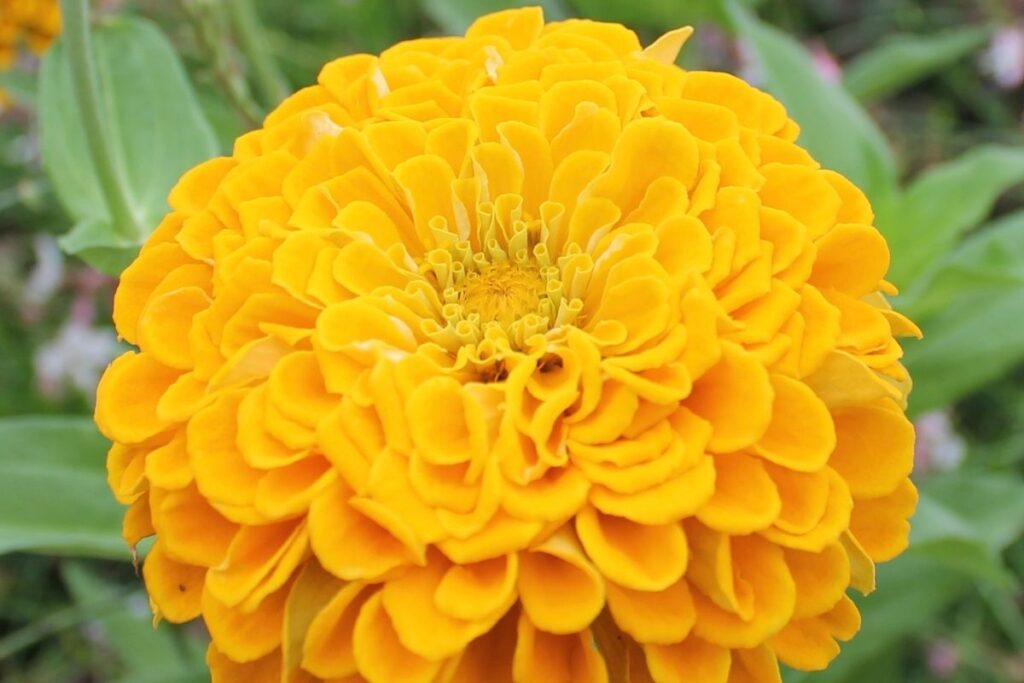
Part of the sunflower tribe in the daisy family, zinnias are a beloved flower native to the Southwestern United States through to South America.
Zinnias come in a variety of colors, but the yellow variety is particularly beautiful. The brightness of the yellow varies, with some appearing more orange than others, making for a mustard-toned flower.
Zinnias are easy to grow and care for. They thrive in full sunlight and well-drained soil, but they are sensitive to frost and will typically die within the first few weeks of fall.
12. Dandelion (Taraxacum)
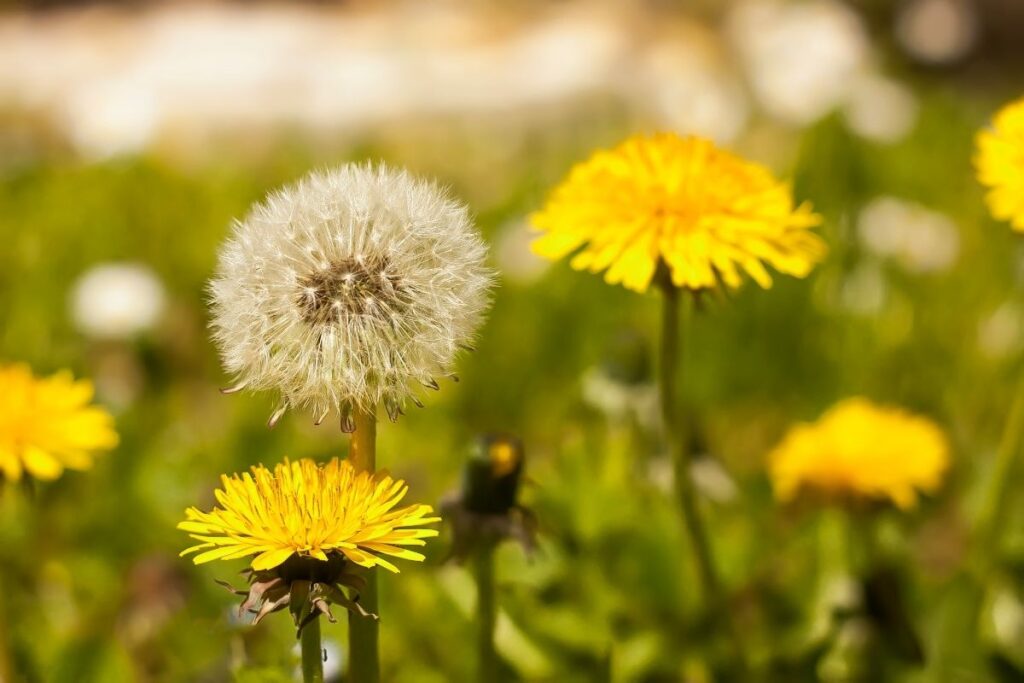
Dandelions are one of the most common weeds found across the world. Known for starting as a wispy seed head that produces parachute-like seeds before blooming into a bright yellow flower of tightly packed thin petals, dandelions come with a lot of opinions.
Some find the species invasive, while others like them for keeping their garden looking natural.
Aside from their appearance, dandelions are also known for their array of health benefits. It’s commonly made into a tea and used in Chinese herbal medicine for its natural antioxidants and anti-inflammatory properties.
13. Lantana
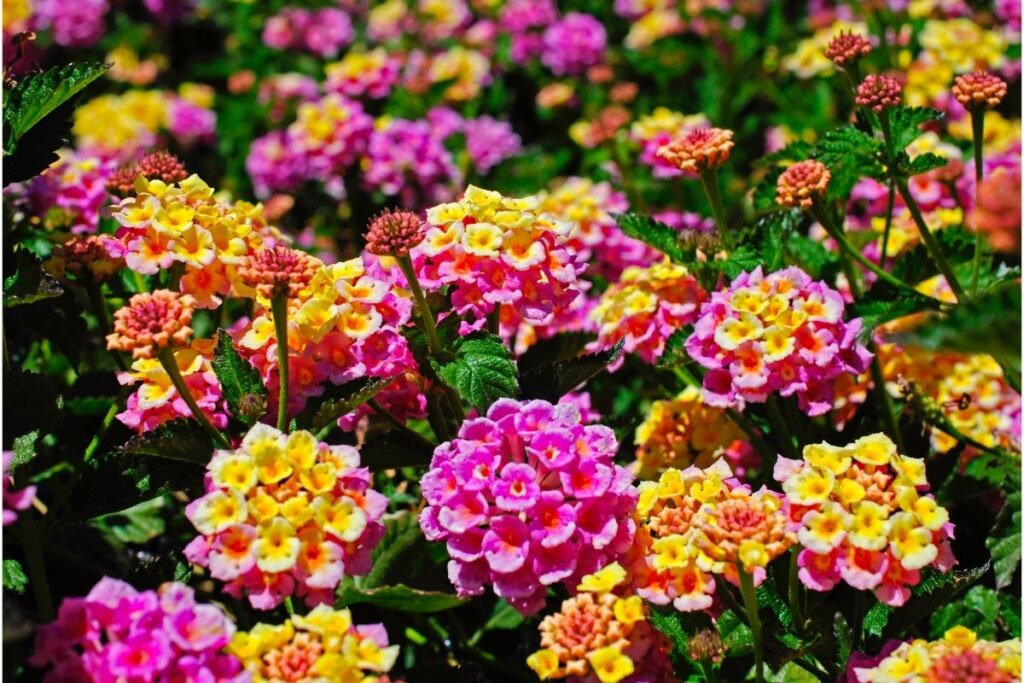
A genus of around 150 flowering plants, lantana is known for blooming fascinating orange flowers in summer and fall.
The flowers are small and grow in clusters, producing a rather unique shape not often seen amongst garden flowers. This unique appearance is due to its natural habitat of tropical regions in Africa and the Americas.
As these flowers grow naturally in tropical regions, they love direct sunlight but hate frost. They are best planted in places that protect the delicate petals from the frost, such as hanging baskets or small pots.
14. Yellow Loosestrife (Lysimachia Vulgaris)

Also known as the garden loosestrife, the yellow loosestrife is a tall upright flower that bears panicles of yellow-orange flowers around the stalks. They are found naturally in wetlands, forests, and damp areas in southeast Europe, but can be grown anywhere if their moist conditions are met.
When put in an arrangement or meticulously planted amongst other flowers, yellow loosestrifes make for a stunning standout feature. It will bloom from late spring to late summer.
15. Tansy
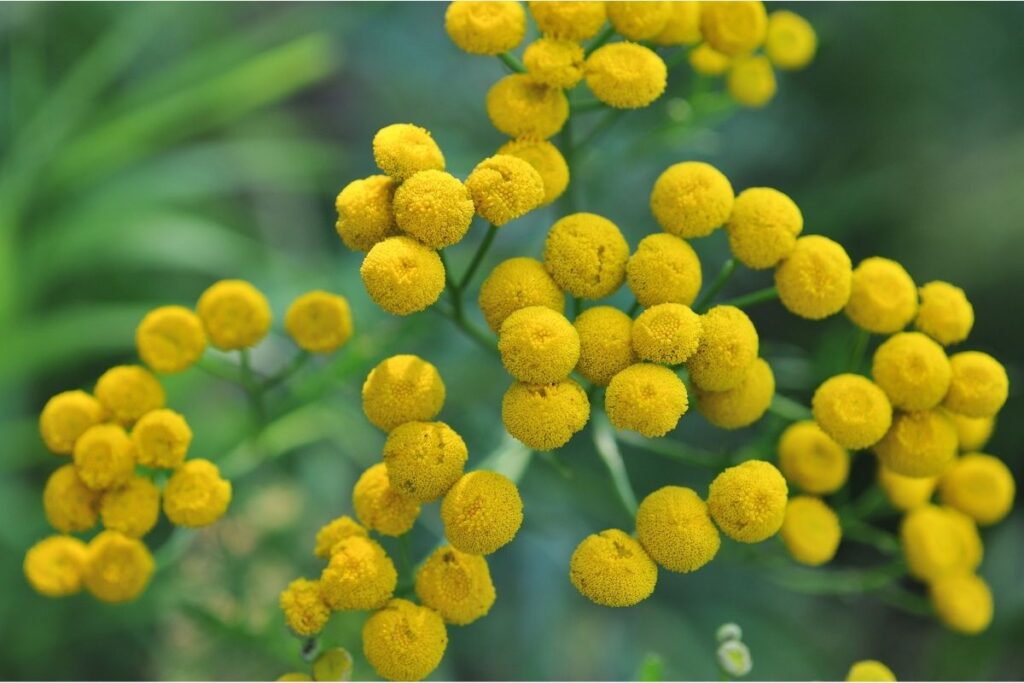
Tansy is a perennial flowering plant that is often considered weeds thanks to its widespread and fast growth.
Despite this, the tansy is a beautiful decorative plant that provides a burst of bright yellow, similar to mustard flowers. The tansy grows button-like yellow flowers and appears across North America, Europe, and Asia.
As tansy will typically spread quite quickly, they can make a garden immediately look like a meadow, which is ideal for those growing their own wildflowers. For those who want to control the population of tansy in their garden, maintenance and tidying up is required.
Conclusion
While there may not be many mustard flower species out there, there are countless other yellow or orange flower species that mimic the structure and color of the classic mustard flower.
Editor’s Recommendations
16 Types Of Olive Plants (Including Photos)







